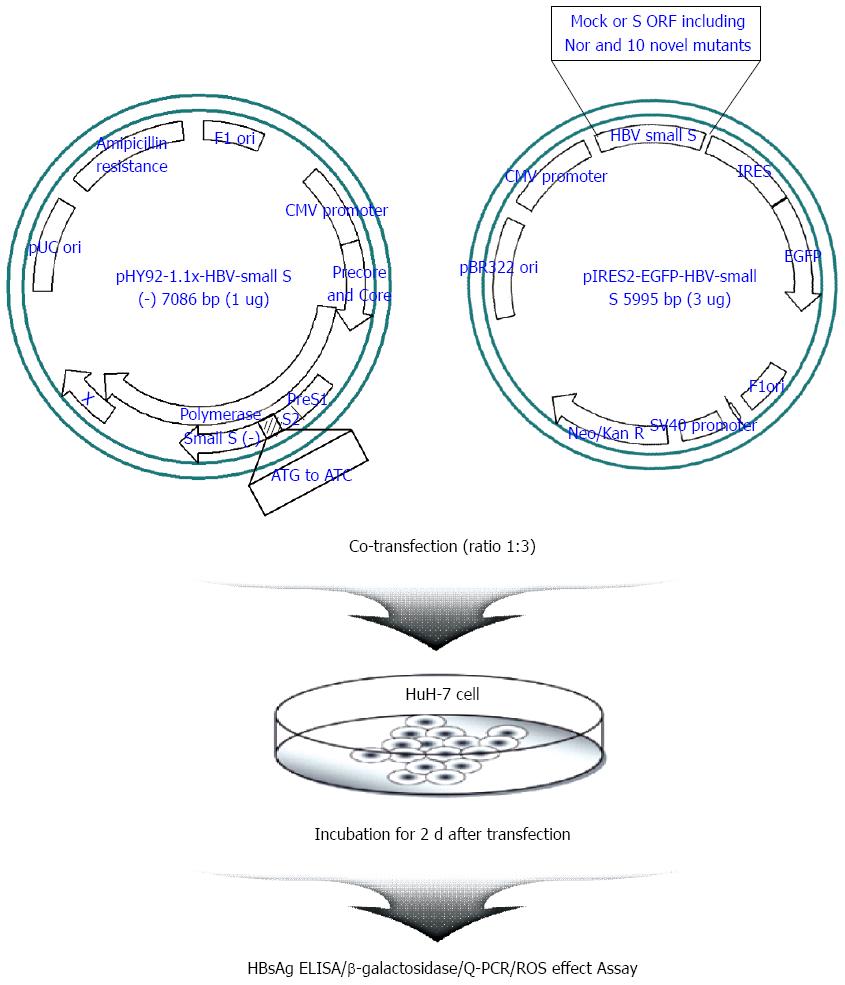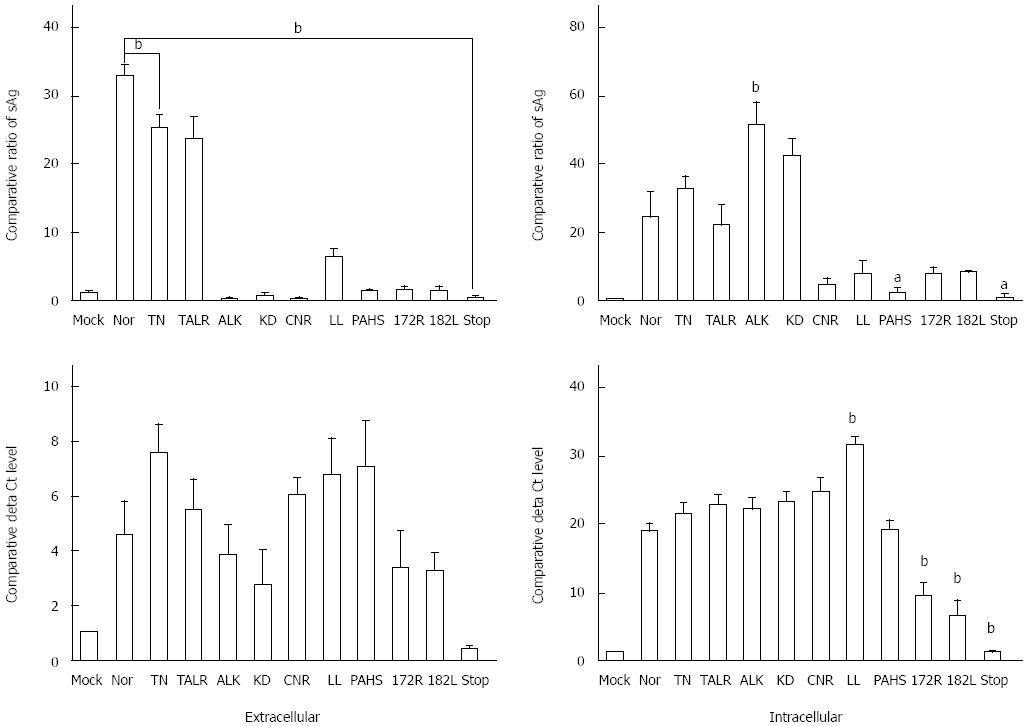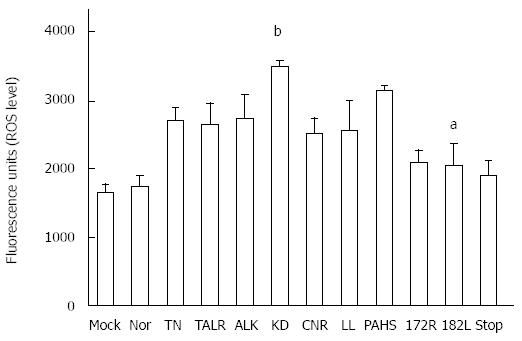Copyright
©The Author(s) 2015.
World J Gastroenterol. Feb 14, 2015; 21(6): 1794-1803
Published online Feb 14, 2015. doi: 10.3748/wjg.v21.i6.1794
Published online Feb 14, 2015. doi: 10.3748/wjg.v21.i6.1794
Figure 1 Schematic experimental strategy used in this study.
Briefly, one microgram of pHY92-1.1x-HBV-small S (-) having a full-genome of hepatitis B virus (HBV) with a knock-out small surface open reading frame (ORF) was co-transfected with three micrograms of pIRES2-EGFP-HBV-small S expressing the sub-genome of small surface region, which has ten variants including mock and wild-type into HuH-7 cell line transiently. After co-transfection, HuH-7 cells were incubated for 2 d. Supernatant and lysed pellet were collected and used for various assays. The tests were performed in triplicate. HBsAg: Hepatitis B surface antigen; ELISA: Enzyme linked immunosorbent assay; Q-PCR: Quantitative polymerase chain reaction; ROS: Reactive oxygen species; Neo/Kan R: Neomycin and Kanamycin resistance.
Figure 2 Secretion capacity and viral DNA formation of occult hepatitis B surface antigen variants.
Extracellular secreted hepatitis B surface antigen (HBsAg) and intracellular expressed HBsAg from cell lysate were measured using a commercial HBsAg enzyme linked immunosorbent assay kit normalized via a β-galactosidase assay. After purification of the viral DNA from the supernatant and cell lysate using a total viral DNA preparation kit, detection of the viral DNA from both intracellular and extracellular was performed using real-time quantitative DNA-polymerase chain reaction assays. The hepatitis B virus DNA was normalized via a β-galactosidase assay. The tests were performed in triplicate (mean ± SD). sAg: Surface antigen. aP < 0.05, bP < 0.01 vs wild type (Nor) group.
Figure 3 Effect of occult hepatitis B surface antigen variants on the reactive oxygen species system.
The reactive oxygen species level according to the occult hepatitis B virus variants in transient transfected HuH-7 was measured using 20 μmol/L of DHR123 reagent, which can detect reactive oxygen species (ROS) such as peroxide and peroxynitrite. The tests were performed in triplicate (mean ± SD). aP < 0.05, bP < 0.01 vs wild type (Nor) group.
- Citation: Kim H, Lee SA, Won YS, Lee H, Kim BJ. Occult infection related hepatitis B surface antigen variants showing lowered secretion capacity. World J Gastroenterol 2015; 21(6): 1794-1803
- URL: https://www.wjgnet.com/1007-9327/full/v21/i6/1794.htm
- DOI: https://dx.doi.org/10.3748/wjg.v21.i6.1794











